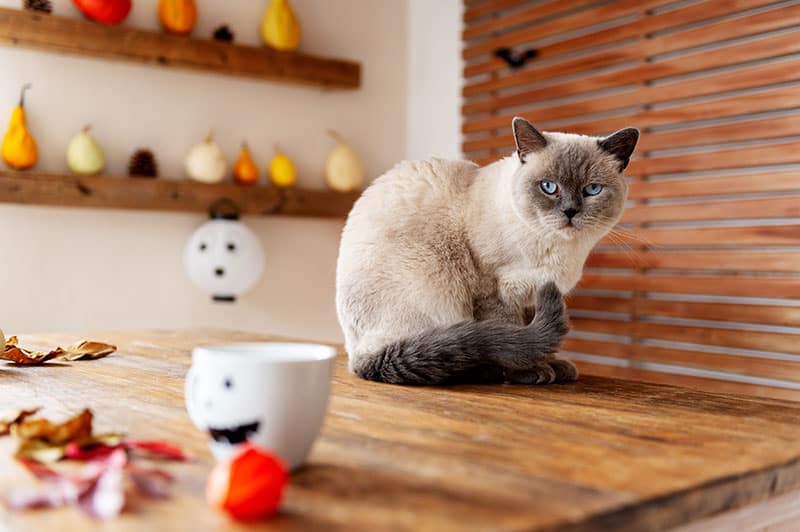High Alert: Halloween Pet Safety Precautions

Wouldn’t it be great if, instead of chocolate bars, dog biscuits were given to trick-or-treaters? While this wouldn’t go over so well with the 12 and under set, it would make Halloween a lot safer for our canine friends. Until this unlikely scenario becomes a reality, however, you can still meet your goals for Halloween pet safety. How, exactly? We’re glad you asked!
Since We Mentioned Chocolate…
To be sure, chocolate is the biggest threat to Halloween pet safety. Responsible for vomiting, diarrhea, hyperactivity, irregular heart rhythm, and high blood pressure, chocolate must never be left out for your pet to find.
Certainly, this time of year is ripe for chocolate-tasting opportunities. Whether your pet sniffs it out in a jacket pocket, picks up a fallen candy bar on the ground, or licks the hands of a youngster, ingesting chocolate can result in a serious pet emergency.
Other Treats
Xylitol is a sugar substitute found in gum, mints, baked goods, and more. Even a small taste can lead to liver failure preceded by disorientation, loss of coordination, seizures, and vomiting. Like chocolate poisoning, the effects of Xylitol on a pet’s system require immediate care.
Also, lollipop and candy apple sticks can end up lodged in a pet’s mouth, jaws, or throat. Candy wrappers may also be consumed accidentally. Whether foil, plastic, or paper, wrappers can cause painful GI obstruction that may require x-rays and even surgery.
Costumes
Pet costumes are all the rage with owners, but many pets are less enthusiastic. If your pet tolerates a costume, be sure to get a photo quickly because they may change their mind in an instant. A stressed or anxious pet may try to get themselves loose from the outfit, causing them to get entangled, confused, and frustrated.
Costumes should never obscure vision, limit movement, or inhibit bathroom needs. Always remove dangling beads, bows, and other accessories.
Halloween Pet Safety
Another unfortunate side effect of the holiday is lost or missing pets. Fear, stress, and anxiety can all play a role in a pet’s escape. Whether they hop the fence, bolt through an open door, or pull free from the leash while trick-or-treating, pets can quickly become separated from their owners. This is where microchips come in handy, as well as reflective or light up gear and visible ID tags.
Last but Not Least
Your approach to Halloween pet safety should also consider seasonal decor. Light up displays can pose risks of electrical shock or entanglement, not to mention they can also be frightening to pets.
Jack-o’-lanterns with real candles can become fire hazards if knocked over by a curious pet. They can also singe whiskers and cause burns. LED lights offer a safer alternative.
Our veterinarians and staff here at Animal Medical Hospital & Urgent Care are always here for you and your pet. If you have additional concerns about Halloween pet safety, please don’t hesitate to contact us.
